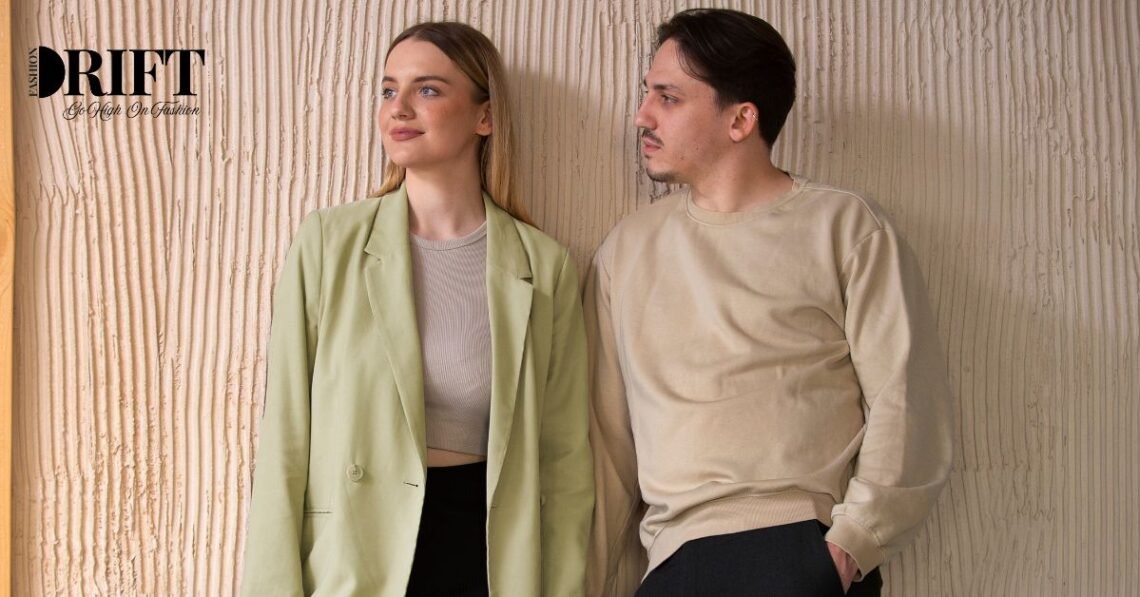Remember that impulse buy during a late-night scroll? I grabbed a trendy top that looked amazing online, but it arrived scratchy and ill-fitting, destined for the back of my closet. Moments like these made me rethink my habits, leading me to discover how blending conscious choices with mindfulness can transform not just your wardrobe, but your whole vibe. It’s about dressing with intention, feeling good in what you wear, and knowing your style supports something bigger—like the planet and the people behind the seams.
What is Conscious Fashion?
Conscious fashion goes beyond trends—it’s about making thoughtful choices that respect the environment, workers, and your own values. Also known as ethical or sustainable fashion, it focuses on using eco-friendly materials like organic cotton or recycled fabrics, while ensuring fair wages and safe conditions for garment makers. This approach counters the waste of mass-produced clothing, encouraging pieces that last and tell a story.
Key Principles of Conscious Fashion
At its core, conscious fashion emphasizes transparency in supply chains, so you know where your clothes come from and how they’re made. It prioritizes durability over disposability, urging brands to create timeless designs rather than fleeting fads. Finally, it promotes circularity, like recycling textiles or upcycling old garments to minimize landfill waste.
The Mindfulness Trend in Fashion
Mindfulness in fashion means pausing to reflect on how your clothes make you feel and align with your life. It’s a growing movement where dressing becomes a daily ritual of self-awareness, blending wellness with style to foster emotional connections to what you wear. This trend encourages slowing down the shopping frenzy, turning wardrobes into spaces of calm and purpose.
How Mindfulness Influences Style Choices
When you approach fashion mindfully, you start asking: Does this piece spark joy or just fill a void? It shifts focus from impulse buys to intentional selections that boost confidence and reduce clutter. Over time, this practice builds a wardrobe that mirrors your inner world, blending comfort with creativity for effortless outfits.
Benefits of Combining Conscious Fashion and Mindfulness
Merging conscious fashion with mindfulness creates a powerful path to personal style that’s both fulfilling and eco-friendly. You end up with fewer, higher-quality items that feel right, cutting down on decision fatigue and buyer’s remorse. Plus, it’s a win for the planet—less waste means a lighter footprint while you cultivate a deeper appreciation for what you own.
- Environmental Impact: Reduces textile waste by 20-30% through durable, recyclable materials.
- Personal Well-Being: Boosts self-esteem with outfits that align with your values, like that cozy organic sweater perfect for mindful mornings.
- Economic Savings: Investing in timeless pieces saves money long-term, avoiding the cycle of cheap replacements.
- Social Good: Supports fair labor, empowering communities and adding meaning to your style.
Pros and Cons of Mindful Conscious Fashion
Pros: Promotes longevity in clothing, reducing annual waste by billions of tons; fosters emotional satisfaction from ethical choices; encourages creativity in styling existing pieces. Cons: Higher upfront costs can feel daunting; limited trendy options may require adjusting to timeless looks; availability varies, demanding more research time.
Fast Fashion vs. Conscious Fashion: A Comparison
Fast fashion thrives on quick trends and low prices, but it often leads to waste and exploitation—think impulse buys that fall apart after a few washes. Conscious fashion, on the other hand, invests in quality and ethics, like that versatile linen dress you wear year-round. The real difference? One fuels overconsumption; the other builds a lasting, feel-good wardrobe.
| Aspect | Fast Fashion | Conscious Fashion |
|---|---|---|
| Production Speed | Rapid, weekly collections | Deliberate, seasonal or made-to-order |
| Materials | Synthetic, cheap fabrics like polyester | Organic cotton, recycled materials |
| Durability | Short lifespan, often disposable | Built to last, timeless designs |
| Environmental Impact | High waste, 10% of global emissions | Low impact, focuses on circularity |
| Labor Practices | Often exploitative, low wages | Fair trade, ethical conditions |
| Cost to Consumer | Low upfront, high long-term | Higher initial, savings over time |
How to Practice Mindful Fashion
Start small by auditing your closet—what do you love, and what collects dust? Mindfulness here means reflecting on each piece’s story, from fabric origins to how it fits your life. Build habits like pausing before purchases, imagining 30 wears, and mixing old with new for fresh looks without excess.
- Shop secondhand first: Thrift stores or apps like Depop offer unique finds, cutting waste while saving money.
- Choose versatile basics: Opt for neutral colors and cuts that layer well, like a classic white shirt from Everlane.
- Care for your clothes: Wash cold, air dry, and mend tears to extend life—simple steps with big impact.
- Rent for occasions: Platforms like Rent the Runway let you try trends without owning, perfect for events.
- Support local artisans: Buy handmade items for quality and community boost, adding personal flair.
Best Conscious Fashion Brands in 2025
As we head into 2025, brands like Patagonia lead with recycled gear built for adventure, while Reformation offers chic dresses from deadstock fabrics. Look to Everlane for transparent basics, or Stella McCartney for luxury vegan pieces—each proving style and sustainability coexist beautifully.
- Patagonia: Eco-friendly outdoor wear, recycled materials, fair labor—ideal for active lifestyles.
- Reformation: Trendy, low-impact dresses from sustainable fabrics, carbon-neutral operations.
- Everlane: Transparent pricing on ethical basics like organic cotton tees.
- Stella McCartney: Luxury vegan designs, no leather or fur, focusing on circularity.
- Eileen Fisher: Timeless womenswear from organic fibers, with take-back programs for recycling.
For the best tools, apps like Good On You rate brands on ethics, helping you shop smarter. Where to get started? Check thrift apps or sites like ThredUp for preloved gems.
People Also Ask
What is the mindfulness trend in fashion? It’s about dressing with intention, focusing on how clothes make you feel and their impact, blending wellness with style for authentic expression.
How can I practice mindful fashion? Start by auditing your wardrobe, choosing quality over quantity, and reflecting on purchases—ask if it’ll bring joy long-term.
What are the benefits of conscious fashion? It reduces waste, supports fair labor, and saves money through durable pieces, while boosting personal well-being.
Is fast fashion really that bad? Yes, it drives 10% of global emissions, exploits workers, and floods landfills with poor-quality items.
FAQ
What is the difference between conscious and fast fashion? Conscious focuses on ethics and longevity, while fast prioritizes cheap trends and quick production, often harming the environment.
How does mindfulness help in fashion? It encourages thoughtful choices, reducing impulse buys and fostering a wardrobe that aligns with your values for better emotional satisfaction.
What are some easy sustainable fashion tips? Shop secondhand, mend clothes, and choose natural fabrics—small swaps like these cut waste without overhauling your style.
Can luxury brands be conscious? Yes, like Stella McCartney, which uses vegan materials and ethical practices, proving high-end can be eco-friendly.
Where can I learn more about sustainable brands? Apps like Good On You or sites like Vogue’s guides offer ratings and insights—start there for informed shopping.
Embracing conscious fashion with a mindful twist isn’t about perfection—it’s about progress, like that time I swapped trendy tees for timeless ones and felt lighter. You’ll discover joy in pieces that last, stories that inspire, and a style that’s uniquely you. Dive in, and watch your wardrobe—and world—transform.





